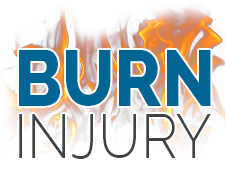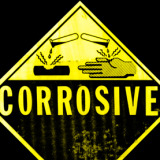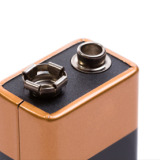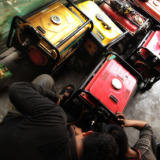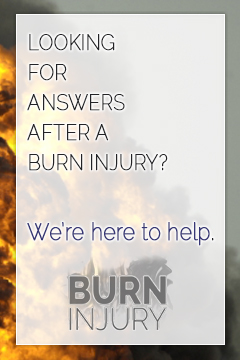Family Files Wrongful-Death Suit After Fiery Crash In 2015
A woman is speaking out more than a year after her husband was killed in a fiery crash on an Ontario highway. On Jan. 22, 2015, Rosalio Munoz-Reyes was inside a model year 2000 Jeep Grand Cherokee when it was rear-ended on the thoroughfare, causing the gas tank to catch fire. Within seconds, the Jeep burst into flames. Rosalio and a co-worker were trapped inside and were burned to death. In June of 2013, the National Highway Traffic Safety Administration asked Chrysler to recall earlier model years, specifically Grand Cherokees built between 1993 and 1998 due to concerns about gas tanks catching on fire. But there were no recalls for later model years between 1999 and 2004. Munoz-Reyes’ attorney said, “The company should have been forced to recall all of these vehicles, not just a select group.” Click HERE to read the complete...
read moreFriction Burns
Friction burns can occur as part of larger accidents, in any home, or in the workplace. They can be equally as or even more serious in terms of severity than other burns. Often times, friction burns can result in third degree burns and require months of intensive surgery and healing. Friction burns can occur in any situation in which there is movement, making them the most ubiquitous type of burns. Types of Friction Burns There are a variety of causes of friction burns. There are two distinct groups into which friction burns can be divided. One occurs as a result of a person moving quickly and then meeting with a static object such as the ground. The resulting friction can be serious enough to cause third degree burns depending on the speed. Both rug burns and motor vehicle accidents fit into this category. The other category of friction burns occurs as a result of person coming into contact with something moving very fast such as a belt sander or a treadmill. Often times, these types of friction burns are much more dangerous because, if a person is alone or unable to stop the machine, it can continue to run and produce friction well past the point in which there is nothing left to burn. Even a household item such as a vacuum can be a dangerous source of pain and disfigurement. Causes of Friction Burns There are many common causes of friction burns. Most are related to machines with quickly moving parts. Others are related to surfaces such as carpet and asphalt. In cases such as asphalt, the temperature of the surface is a factor in the severity of the burn. Therefore, accidents in which a passenger skids across a road are usually worse in the afternoon. Common causes of friction burns include: Carpet burns Rope burns Treadmills Vacuum cleaners Sanding or automotive belts Road accidents (often referred to as “road rash”) Safety and Prevention The best form of prevention in cases of friction burns is remaining alert and wearing proper clothing. Motorcyclists are especially at risk for road rash due to high speeds and to the lack of an enclosure. All cyclists should take care to wear thick, padded clothing and a helmet. Children are also especially at risk for friction burns in the house, particularly from treadmills and vacuum cleaners. Never leave a child alone with such equipment as they can easily fit their hands into otherwise unexposed areas containing moving parts. Many children have unfortunately suffered frictions burns as a result of treadmills and have had to undergo lengthy and painful surgeries. Sources: Agrawal, A., S.C. Raibagkar, and H.J. Vora. “Friction Burns: Epidemiology and Prevention.” National Institute of Health (NIH), 31 Mar. 2008. Web. 13 Dec. 2014. <http://www.ncbi.nlm.nih.gov/pmc/articles/PMC3188131/>. Menon, Seema, Diane Ward, John G. Harvey, Erik La Hei, and Andrew J. A. Holland. “Friction Burns in Children.” Journal of Burn Care & Research (2004): 736-40. Print. Rubin, P., I. Starley, and R.P. Jones. “The Revolutionary Dual Cyclone Vacuum Cleaner — a New Cause of Digital Friction Burns in Children.” Burns: 78-79....
read moreWorkplace Chemical Burns
Chemical burns are one of the most common burn hazards present in workplaces. Chemical burns can cause severe injuries and lasting pain. Employers are responsible for mitigating employee’s exposure to chemicals that may cause burns and for implementing procedures to mitigate the risk of employees being burned by hazardous chemicals which must be used. Failure to ensure the safety of employees while in the workplace may result in Workers’ Compensation claims and penalties for the employer. Identifying Chemical Burn Hazards Exposure to strong acids and bases can cause considerable burns even after a very short time. It is important for employers to identify chemicals that may cause burn injuries. These chemicals should be clearly labeled and stored in a specific area. Chemicals commonly used in workplaces that may cause burn injuries include: Nitric acid Phosphoric acid Hydrofluoric acid Hydrochloric acid Muriatic acid Sodium hydroxide Potassium hydroxide Sodium hypochlorite Calcium hypochlorite Ammonia Preventing Chemical Burns In order to prevent chemical burns, employees should be educated on proper use and storage of all hazardous chemicals. Most workplaces utilize material safety data sheets to have a record of the composition of all hazardous chemicals. Employees are generally required to learn basic information regarding common chemicals which will be used and sign a waiver stating that this information is understood. Protective Clothing Employees should also have access to protective clothing that is designed to prevent chemical burns from the specific chemicals being used in the workplace. Safety gloves are common, but employees that work with larger amounts of hazardous chemicals may require face masks, safety glasses, and jackets or aprons to protect skin from the chemicals. Failure to provide adequate protective clothing may be considered employer negligence, which can result in fines and penalties for the employer. Burn Treatment In addition to taking precautions to prevent burns, employers should also have safety procedures and first aid supplies in place to mitigate injuries from chemical burns. This may include eye washing stations, burn cream, and gauze or other protective covering. Employees should be trained on the proper use of equipment and supplies as part of job training. Workers’ Compensation Claims If an employee was injured by chemicals while on the job, the employee may file a worker’s compensation claim. If the claim is approved the employer, the employee’s medical costs and wages lost due to the injury may be covered. If a workplace fights against a workers’ compensation claim, an employee may benefit from hiring a skilled attorney. The attorney will assist the employee in proving that the chemical burn was caused by employee negligence or inherent hazards and not by the employee’s actions. Sources: “Effects of Skin Contact with Chemicals.” Centers for Disease Control and Prevention. Centers for Disease Control and Prevention, 1 Jan. 2011. Web. 16 Sept. 2014. <http://www.cdc.gov/niosh/docs/2011-200/pdfs/2011-200.pdf> “Focus On Safety: Workplace Burns.” Safe Solutions. Safe Solutions, 3 Feb. 2014. Web. 16 Sept. 2014. <http://www.saferemployees.com/?p=736> Mian, M.A.H., and R.F. Mullins. “Workplace-Related Burns.” Annals of Burns and Fire Disasters 24.2 (2011): 89-93. PMC. Web. 16 Sept. 2014. <http://www.ncbi.nlm.nih.gov/pmc/articles/PMC3230153/> Schlatter, Nelson. “Putting the Lid on Chemical Burns.” Occupational Health and Safety. Security, Safety, and Health Group, 1 Jan. 2011. Web. 16 Sept. 2014....
read more9-Volt Battery Fire Hazard
9-volt batteries have been the cause of many house fires in recent years. Consumers are often unaware of the potential safety hazards associated with 9-Volt batteries. The design of 9-volt batteries makes it necessary to take certain precautions when storing and disposing of the batteries in order to mitigate fire hazards. 9-Volt Battery Design On a 9-volt battery, the positive and negative posts are situated side by side. Due to this configuration any object or material that is conducive to electricity may form a circuit if placed over the top of the positive and negative posts. This circuit will generate heat, which may cause burns if touched or may ignite flammable materials in the vicinity. 9-Volt Battery Storage Hazards Storing 9-volt batteries in a drawer with metal and flammable materials is a fire hazard. Other batteries, keys, paper clips, and change all have the potential to form a circuit when touching both the positive and negative posts. If this circuit comes in contact with materials such as paper or pencils, the heat may ignite the flammable materials. Since all of these materials are often stored in household “junk” drawers with 9-volt batteries, the potential fire hazard is high. The risk is further increased because the discreet nature of a drawer may cause the fire to become larger and spread to cabinets before being detected by residents. Proper 9-Volt Battery Storage In order to mitigate storage hazards associated with 9-volt battery storage, these batteries should be stored in the original packaging until use. 9-volt batteries should be stored away from other batteries and materials that may form a circuit or ignite. If batteries must be removed from packaging, placing a piece of electrical or masking tape over the exposed posts will prevent the batteries from coming into contact with hazardous materials. 9-Volt Battery Disposal Disposing of 9-volt batteries in a trash receptacle with other materials also holds the potential to start a fire. Batteries may come into contact with rubbish such as aluminum foil or other batteries, and may ignite flammable cooking agents or paper rubbish that has been discarded. This is an ongoing potential hazard, as batteries that have been discarded may be moved around during the process of trash removal and transport. Fires that begin in a garbage pile may also be difficult to locate and extinguish. Proper Disposal 9-volt batteries should not be discarded with other household rubbish. After removing 9-volt batteries for disposal, the posts should be covered with tape to ensure safety until the batteries can be properly disposed of. Some states and towns offer collections sites for hazardous household waste such as batteries. Contacting city or state officials to determine the best way to dispose of 9-volt batteries in the area is recommended. Sources: “9-Volt Battery Safety.” NFPA. NFPA. Web. 5 Sept. 2014. <http://www.nfpa.org/~/media/files/safety information/safety tip sheets/9voltbatterysafety.pdf> Tomlinson, Chris. “9-Volt Battery Starts House Fire [Video] – Churubusco Volunteer Fire Department.” Churubusco Volunteer Fire Department. Churubusco Volunteer Fire Department, 1 Jan. 2014. Web. 5 Sept. 2014. <http://buscofire.org/2014/01/09/9-volt-battery-starts-house-fire/> “Weekly Safety Wisdom- 9-Volt Batteries- a Fire Hazard.” IMLRMA. IMLRMA. Web. 5 Sept. 2014....
read moreHoliday Fire Safety
For many, decorating the home to welcome the holiday season is a steadfast tradition. However, with bright lights and spirited adornments comes an increased risk of fire hazards both inside and outside the home. The U.S. Fire Administration reports that in 2006, roughly 128,700 December and holiday fires were reported. Families should practice holiday fire safety by being alert and mindful of potential fire risks, and avoiding them as much as possible. Christmas Tree Fires While relatively uncommon, Christmas tree fires can be a unique holiday risk. When Christmas tree fires do occur, they often cause significant property damage, injury to families, and even death. There are a number of steps families can take to prevent Christmas tree fires. When selecting an artificial tree, families are urged to look for fire resistant models that extinguish quickly. The U.S. Fire Administration recommends the following tips to prevent Christmas tree fires: When selecting a live tree, look for the freshest and greenest available Keep the Christmas tree well-watered to maintain hydration and reduce flammability Never place lit candles on or near a tree Avoid putting the tree up too early or leaving it up after the holidays Ensure that all tree decorations are flame-retardant and away from heating vents and exits Never attach spotlights to a tree; instead, fasten them beside or above the tree Holiday Lighting Safety Lighting can be a significant fire hazard during the holidays. When decorating the exterior of the home, families should ensure that all lights receive testing laboratory approval for outside use. All lights, old and new, should be checked for cracked or broken sockets, bare or frayed wires, and loose connections. All damaged sets should be returned or discarded. When replacing bulbs, be sure to use those with the same wattage. Avoid stapling or mailing light strings, as this may damage cords. Electric Shock Protection Electrical outlets should never be overloaded with too many extension cords or decorations. As a general rule of thumb, no more than three standard light sets should be attached to one extension cord. Outdoor lighting should be plugged into circuits that are protected by ground fault circuit interrupters (GFCIs) for added protection. Holiday Fire Safety Tips Additional holiday fire safety tips include: Avoid leaving on unattended holiday lights Never place wrapping paper in a fireplace, as this may throw off sparks and embers Use only flame retardant holiday decorations around the home Consider using flameless battery-operated candles instead of traditional candles Never leave candles unattended or in areas where they may be knocked over Move candles away from flammable objects such as ribbons, wrapping paper, gift bags, and evergreen decorations Be mindful that loose clothing can catch fire – therefore, candles and other fire hazards should be kept out of reach Sources: http://www.usfa.fema.gov/downloads/pdf/statistics/v6i4.pdf http://www.healthcommunities.com/general-safety/avoid-holiday-decorating-disaster-tips.shtml...
read moreWorkplace Electrical Burns
Workers are at risk for electrical burn injuries at nearly every type of workplace. Approximately five to ten percent of traumatic work deaths are caused by electrical accidents every year in the United States. Electrical burn injury risks increase dramatically when employers are negligent regarding electrical safety. Workplace Electrical Injuries Electrical accidents put workers at risk of severe burn injuries and other complications. Electrical burn injuries differ from other types of burn injuries because the severity of the injuries is not always apparent. Electrical accidents can cause tissue degeneration and severe burn injuries to nerves and muscles as well as skin. Electrical accidents can also cause heart injuries such as cardiac arrest as the natural electrical current that regulates the cells becomes interrupted. Additionally, breathing and muscle contraction may be affected by electrical contact. Severity of Burn Injuries The severity of burn injuries depends on the type of current-alternating or direct current, the amount of current, and the time in contact with the electricity. When electricity enters the body, there is generally an entrance point and an exit point. These points are where burn injuries are visible on the body. Internal injuries may be difficult to diagnose, but often require immediate attention. Electrical Accident Causes Workplace electrical burns can be caused by many different actions, including: Touching equipment with faulty wires Touching electrical sockets or switches with damp hands Grasping live wires Cutting into live wires Coming in contact with electrically charged water Using improperly maintained equipment Improper use of electrical equipment Electrical Burn Prevention Most workplace electrical burns can be prevented by following electrical safety standards. The Occupational Safety and Health Administration, commonly known as OSHA, provides detailed guidelines for preventing electrical burns in many different types of workplaces. Employers that fail to comply with OSHA standards may be subject to fines and lawsuits. Electrical Burn Treatment When an employee suffers an electrical injury, it is important that coworkers or managers act fast. The employee should not be touched while contact with the electrical source is maintained. If possible, the current should be stopped at the power source. If this is not possible, it is necessary to remove the employee from contact using a dry object that is nonconductive to electricity. Medical attention should be sought as soon as possible. Only professionals should attempt to resuscitate an unconscious electrical burn victim. If the burn victim is not breathing, CPR should be administered only by trained professionals. Burns should be cooled with coverings that will not stick, and should be loosely covered to prevent infection. Workplace Negligence and Electrical Burns If an electrical burn is the result of workplace negligence, victims are encouraged to seek compensation. Workplaces owe a duty of care to employees to make sure that workplace environments are free from electrical hazards. Electrical burn victims may be entitled to compensation for medical costs, lost wages, and pain and suffering. Sources: http://www.esfi.org/index.cfm/page/Electrical-Safety-in-the-Workplace-Fact-Sheet/cdid/10619/pid/3003 http://www.hse.gov.uk/electricity/injuries.htm...
read more